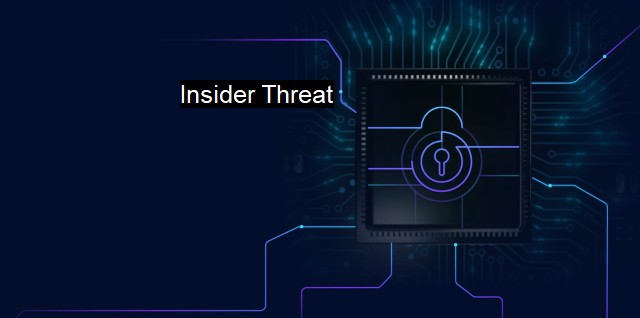What is Insider Threat?
The Threat Within: Understanding and Preventing Insider Threats in Cybersecurity and Antivirus
"Insider threat" is a term used in the domain of cybersecurity and antivirus development to describe the risk posed by individuals who have inside access to a company's secure information and systems. These individuals, whether they're employees, former employees, contractors, or partners, have legitimate access to the organization's network, system, or data and can misuse this access intentionally or unintentionally to cause harm.The underlying risk factor of an insider threat is trust combined with privilege. Individuals trusted with gaining access to an organization's confidential data can misuse that trust, leading to security breaches that can be catastrophic. These privileged individuals have a unique advantage since they are familiar with the organization's daily operations and its system weaknesses, making them capable of causing greater harm than an external threat.
Insider threats exhibit in various forms; they can be malicious or unintentional. The scope of malicious insider threats ranges from users seeking monetary gain, strategic leverage, or revenge, to users influenced or coerced by external entities into approximating harmful deeds. An employee, disgruntled or terminated, might download, steal, or delete data as a form of rebellion or leverage for negotiation with the company.
Unintentional insider threats are equally detrimental and occur easier than the malicious ones. They occur when employees innocuously take part in risky behaviors like not adhering to cybersecurity protocols, downloading untrustworthy attachments, falling prey to phishing attempts, using unsecured networks for accessing sensitive company information, or sharing sensitive data with unauthorized people.
It is worthy of note that antivirus systems are designed to ward off external security threats primarily. Still, they frugally address the challenge posed by insiders' threat due to the latter's vast and intricate nature. The lapse in system function presents a significant challenge to cybersecurity professionals as one of the most strenuous hurdles to overcome.
Despite the formidable nature of an insider threat, it is not unbeatable; organizations can deter insider threats by implementing stringent cybersecurity measures and cultivating a culture of attention and vigilance. Instituting layers of access controls to prevent data leakages for unscrupulous purposes, continuous background checks on privileged staff members, regular staff training and sensitization towards cybersecurity, limiting data access to "need-to-know" bases are viable means of combating the insider threat.
Proactive technologies like User Behavior Analytics (UBA), which utilizes machine learning to analyze user behavior and detect unusual patterns, can be instrumental in preventing insider threats early before they manifest to cause significant damage. Real-time security alerts and rapid incident response teams can prevent, or at least, reduce potential damages from insider risks.
Ethics and trust play a critical part in control practices going into the future. As technologies advance, threat patterns evolve and adapt, thereby keeping the security industry continually on edge. Insider threat, consequently, remains an evolving challenge that requires constant vigilance, swift response, and a blend of technical and social solutions across all levels within an organization. But it's not an endless game of cybersecurity cat and mouse – with consistent action and alertness, organizations can improve their odds in thwarting insider threats. Cybersecurity is the shared responsibility of everyone within an organization, and addressing insider threats involves cultivating a culture of security awareness throughout all levels of staff.

Insider Threat FAQs
What is an insider threat in cybersecurity?
An insider threat in cybersecurity is when an employee, contractor or any other individual with authorized access to your company's network and data intentionally or unintentionally misuses that access to cause harm to your organization.What are some common types of insider threats?
Some common types of insider threats include employees stealing sensitive data, contractors leaking confidential information, and rogue employees intentionally installing malware or viruses on company computers.How can you identify an insider threat?
To identify an insider threat, you can monitor employee behavior, look for unusual network activity or data transfers, investigate suspicious logins or access attempts, and conduct regular security audits.What are some preventive measures that organizations can take to mitigate insider threats?
Preventive measures to mitigate insider threats include implementing strict access controls, monitoring employee behavior, conducting regular security awareness training programs, implementing data loss prevention tools, and regularly reviewing and updating security policies and procedures.| | A | | | B | | | C | | | D | | | E | | | F | | | G | | | H | | | I | | | J | | | K | | | L | | | M | |
| | N | | | O | | | P | | | Q | | | R | | | S | | | T | | | U | | | V | | | W | | | X | | | Y | | | Z | |
| | 1 | | | 2 | | | 3 | | | 4 | | | 7 | | | 8 | | |||||||